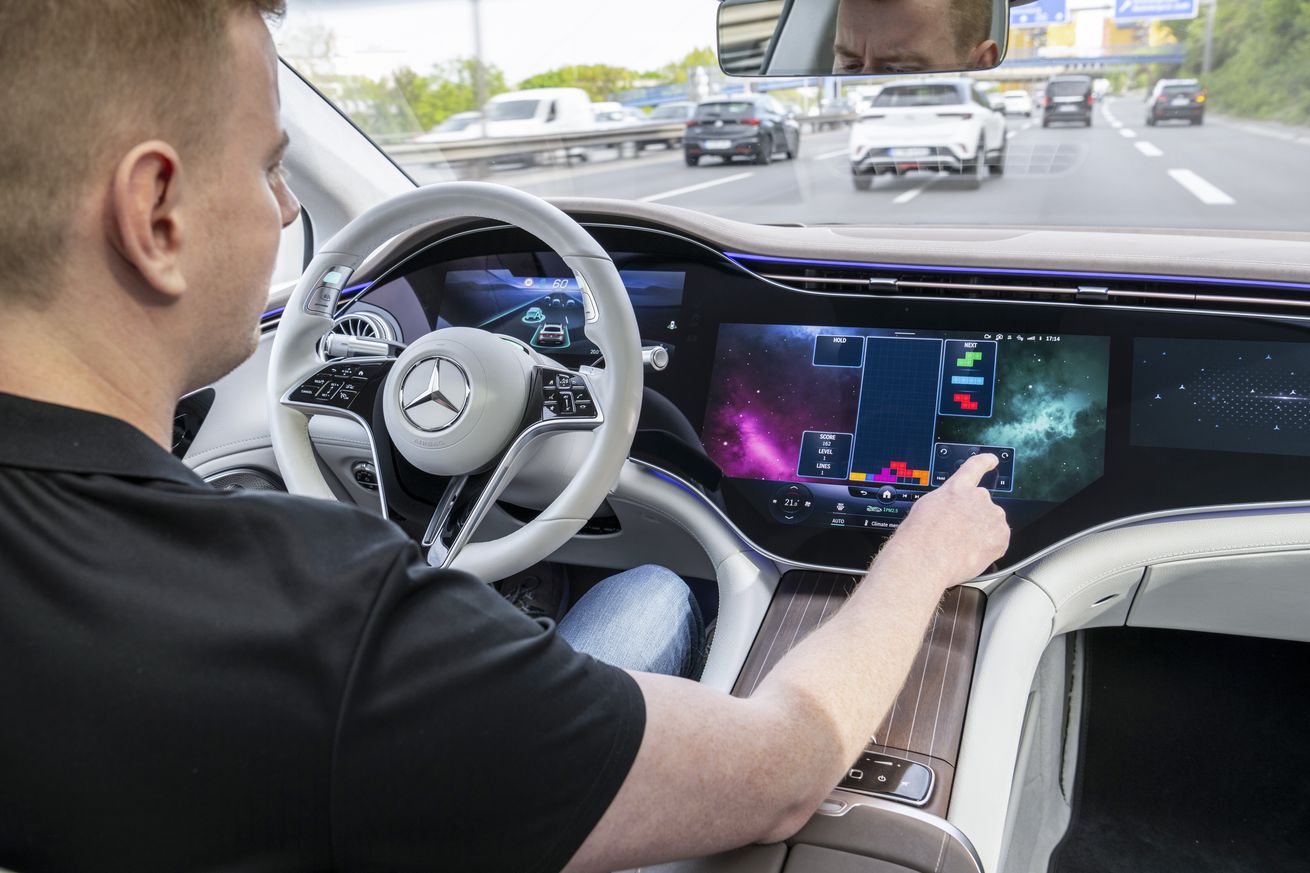
Mercedes-Benz is first to get approval to sell partially autonomous vehicles in California
Mercedes-Benz is the first company to receive approval from the California Department of Motor Vehicles to sell or lease vehicles with an automated driving system to the public, according to the agency.
The DMV issued an autonomous vehicle permit to the company, authorizing Mercedes-Benz to sell vehicles with its Drive Pilot highway driving feature for use on public roads. Drive Pilot is described as a Level 3 system, in which the car does all the driving but the human driver needs to stand by to take control at a moment’s notice.
Drive Pilot is similar to “hands-free” highway driving systems like GM’s Super Cruise, Ford’s BlueCruise, and Tesla’s Autopilot, in so far as it allows drivers to take their hands off the steering wheel and feet off the pedals under certain conditions. But unlike Level 2 systems, in which drivers are required to keep their eyes on the road, Mercedes’ Level 3 system has a few more allowances.
The car does all the driving, but the human driver needs to stand by to take control at a moment’s notice
For example, the driver must keep their face visible to the vehicle’s in-car cameras at all times but can also turn their head to talk to a passenger or play a game on the vehicle’s infotainment screen. (Tetris, for example.)
But Drive Pilot is not a fully autonomous system. Drivers can’t nap in the car or ride in the backseat without anyone behind the steering wheel. The system will disengage if you even attempt to cover your face, blocking access to the in-car cameras. Mercedes says that Drive Pilot will only operate at speeds up to 40 mph on “suitable freeway sections and where there is high traffic density” — which seems to suggest it will only be available in heavy, stop-and-go traffic.
It will be interesting to see how Mercedes drivers respond to the limits set out in the permit from the DMV. The agency says:
This permit excludes operation on city or county streets, in construction zones, during heavy rain or heavy fog, on flooded roads and during weather conditions that are determined to impact performance of DRIVE PILOT. Vehicle owners must watch a mandatory video explaining the capabilities of the system and how to engage and disengage the technology before Mercedes-Benz will activate DRIVE PILOT in the vehicle.
In addition to cameras and radar, the system relies on data from a lidar sensor to construct a 3D model of its surrounding environment, as well as microphones to detect approaching emergency vehicles.
Earlier this year, Mercedes self-certified in the state of Nevada that Drive Pilot meets the state’s minimal risk requirements. But today’s announcement represents the first time that a regulating agency has taken a close look at the technology and given it the green light.
To be sure, Level 3 systems are not without their risks. Most autonomous vehicle operators, including Waymo and Cruise, have said they think Level 3 is too dangerous, preferring to work exclusively on Level 4 technology. The reason is the need for drivers to stay attentive despite the vehicle performing most of the driving tasks.
Research suggests that the hand-off between the driver and the system can be affected by driver complacency, which can cost a person crucial seconds before regaining control of the vehicle.

